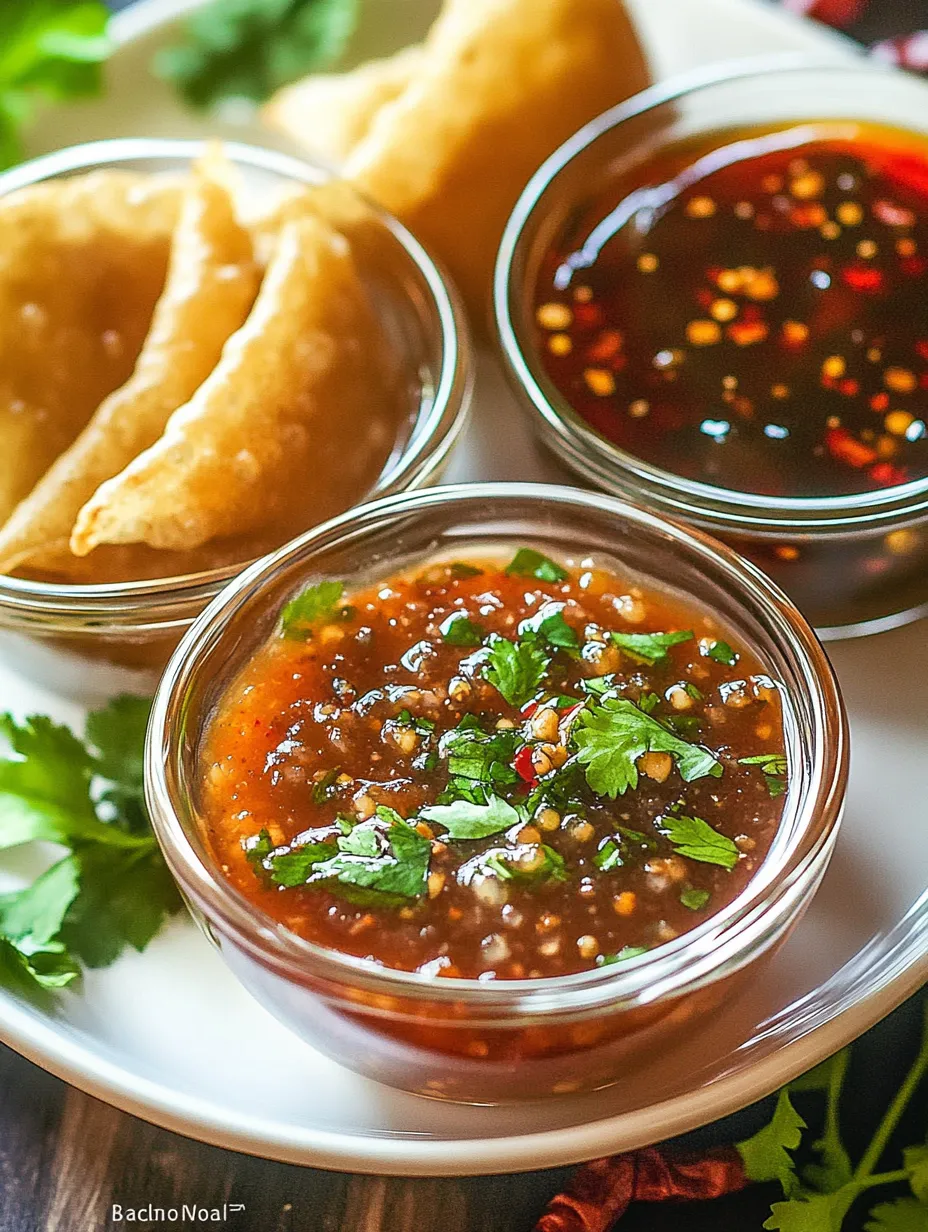 Pin it
Pin it
Tamarind dipping sauces bring tangy excitement to almost any plate. These three variations cover the bases whether you want something silky smooth for samosas a bright chunky salsa for grilled skewers or a deep Asian style for dumplings and spring rolls. Each version lets the tamarind shine and is quick enough for last minute entertaining or regular weeknight meals. I started experimenting with these during one Diwali feast and since then they have become my go-to crowd pleasers.
Whenever I need a little something special for friends or family these sauces deliver. The Asian version in particular never fails to get compliments on its bold sesame hit.
Ingredients
- Tamarind paste: gives the signature sour tang. Look for deep brown paste without additives
- Brown sugar or honey: balances the tartness for a rounded taste
- Shallots or red onions: add sharpness and crunch. Pick firm tight bulbs for best flavor
- Green or red chilies: bring brightness and heat. Use fresh and adjust amount to your spice preference
- Cilantro: infuses freshness. Use leaves with no wilting or yellowing
- Roma tomatoes or any vine ripe variety for salsa style: Juicy and ripe tomatoes are best
- Corn starch: helps the Asian style sauce thicken nicely
- Toasted sesame oil: intensifies the Asian flavor. Darker oil means deeper nuttiness
- Sesame seeds: add crunch and a lovely fragrance. Use plain or toast briefly in a pan
- Soy sauce: adds a salty depth in the Asian style. Choose good quality low sodium if preferred
- Ginger and garlic: give zing to all three. Always use fresh roots for more punch
- Mint and green onion (optional): for herbal lift in salsa and Asian versions
- Salt: only if needed depending on the tartness of your tamarind and the saltiness of soy
- Tip for tamarind paste: If using dried blocks soak and strain thoroughly for smooth results
Step-by-Step Instructions
- Prepare the Simple Sauce:
- Combine tamarind paste and water in a small saucepan. Slowly bring just to a boil on medium heat. Turn off heat and set aside to cool completely. Once cooled stir in chopped shallots chilies cilantro honey or brown sugar cumin if using and adjust seasoning. Let the flavors meld together for at least one hour for best taste
- Make the Salsa Style:
- In a mixing bowl add tamarind paste chopped tomatoes shallots mint and or cilantro chilies garlic cumin and cayenne pepper. Using a masher or the back of a spoon crush the mixture into a coarse salsa texture. Taste and add sugar or honey if the sauce is too tart and salt if needed. Let sit fifteen minutes before serving so the flavors fully combine
- Craft the Asian Style Sauce:
- Heat tamarind paste with half of the measured water in a small saucepan over medium high heat. In a separate bowl mix corn starch with the rest of the water and whisk until totally dissolved. Slowly pour the slurry into the hot tamarind mix. Continue stirring over medium heat until the sauce thickens to a glossy pourable consistency. Remove from heat and let cool completely then stir in green onions cilantro honey or sugar toasted sesame oil sesame seeds soy sauce if using ginger and red pepper flakes. Taste for balance and adjust seasonings
 Pin it
Pin it
I find myself especially drawn to the zing from fresh ginger. Once when we ran out my daughter actually ran next door just to borrow ginger from our neighbors since this sauce was the star of her lunchbox dip.
Storage tips
These sauces keep well in the fridge in airtight containers for about four to five days. The salsa style is best enjoyed fresh but if prepping ahead make the base and add tomatoes and fresh herbs just before serving. None of these freeze well so plan on making only what you need for the week.
Ingredient substitutions
If you cannot find tamarind paste pomegranate molasses is your best bet though it brings a slightly deeper fruity flavor. For sweetness maple syrup can sub in for honey or brown sugar. Use regular sesame oil if toasted is not handy adjusting the amount for flavor.
 Pin it
Pin it
Serving suggestions
Each sauce fits a different mood. Drizzle the simple version over salads kebabs or chaat. The salsa shines with tortilla chips grilled chicken or spread on sandwiches. The thick Asian sauce lifts dumplings tofu or shrimp into a special treat.
Cultural and historical context
Tamarind is beloved from India through Southeast Asia for its bright sour punch and versatility. It has cooled summer meals for centuries and brought tang to chutneys salsas and marinades. Offering a trio of sauces like this turns any gathering into a celebration of global flavors and traditions.
Frequently Asked Questions
- → What appetizers pair well with these sauces?
Try them with samosas, spring rolls, pakoras, grilled vegetables, or crisp crackers for vibrant flavor.
- → Can I make these sauces ahead of time?
Yes, the sauces store well in the fridge for up to 4-5 days, except the salsa style which is best fresh.
- → Is it possible to substitute tamarind paste?
Pomegranate molasses can be used in place of tamarind; adjust sweetness and liquid as needed.
- → How spicy are these sauces?
Spice levels can be tailored by adjusting the amount and type of chilies or cayenne pepper added.
- → Are the sauces suitable for specific diets?
All versions are vegan, vegetarian, gluten free, and fit several dietary preferences with basic ingredient swaps.
- → What is the best way to thicken the Asian-style sauce?
Cornstarch dissolved in water and simmered with the tamarind mixture creates a glossy, thickened finish.
